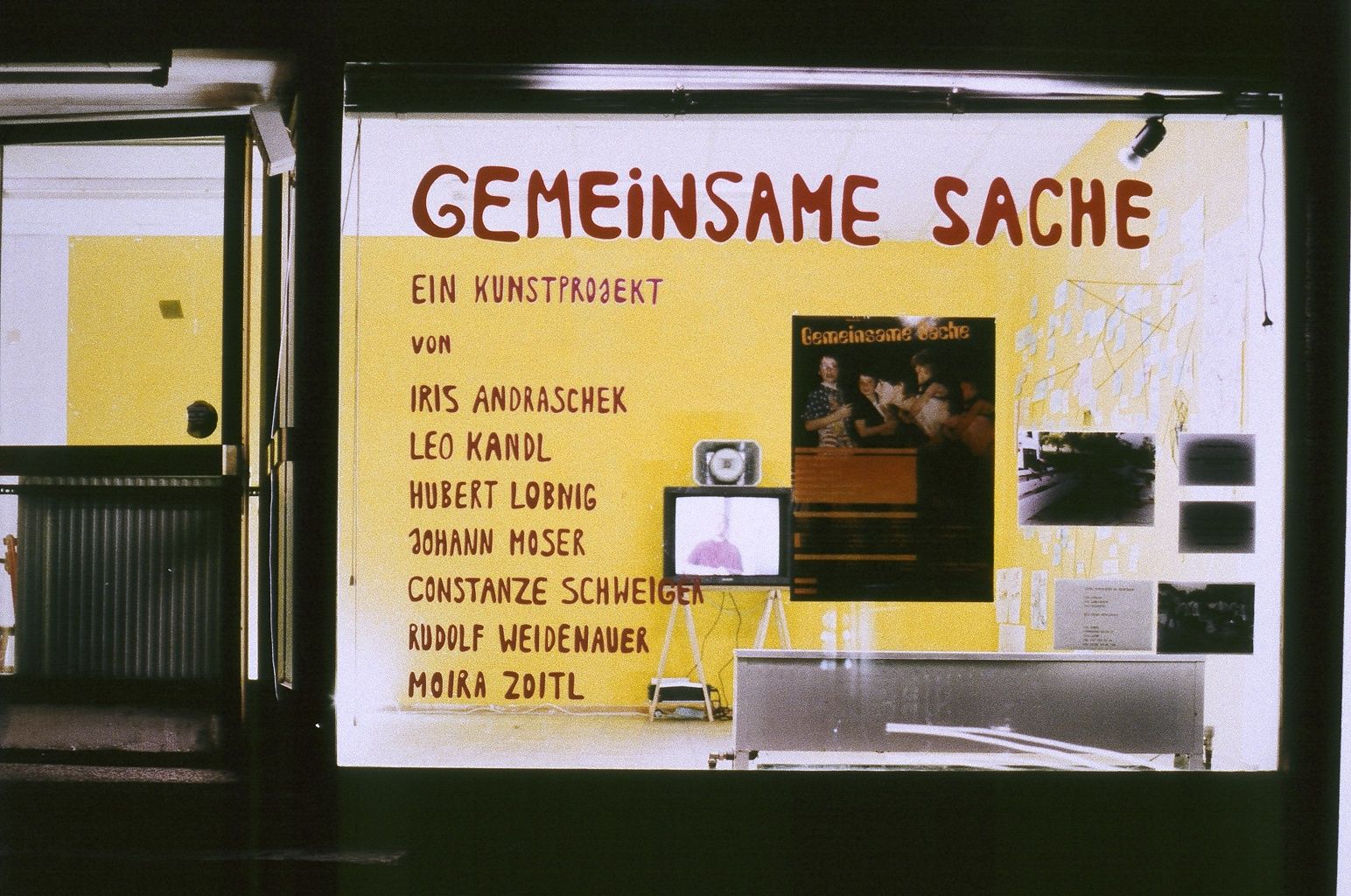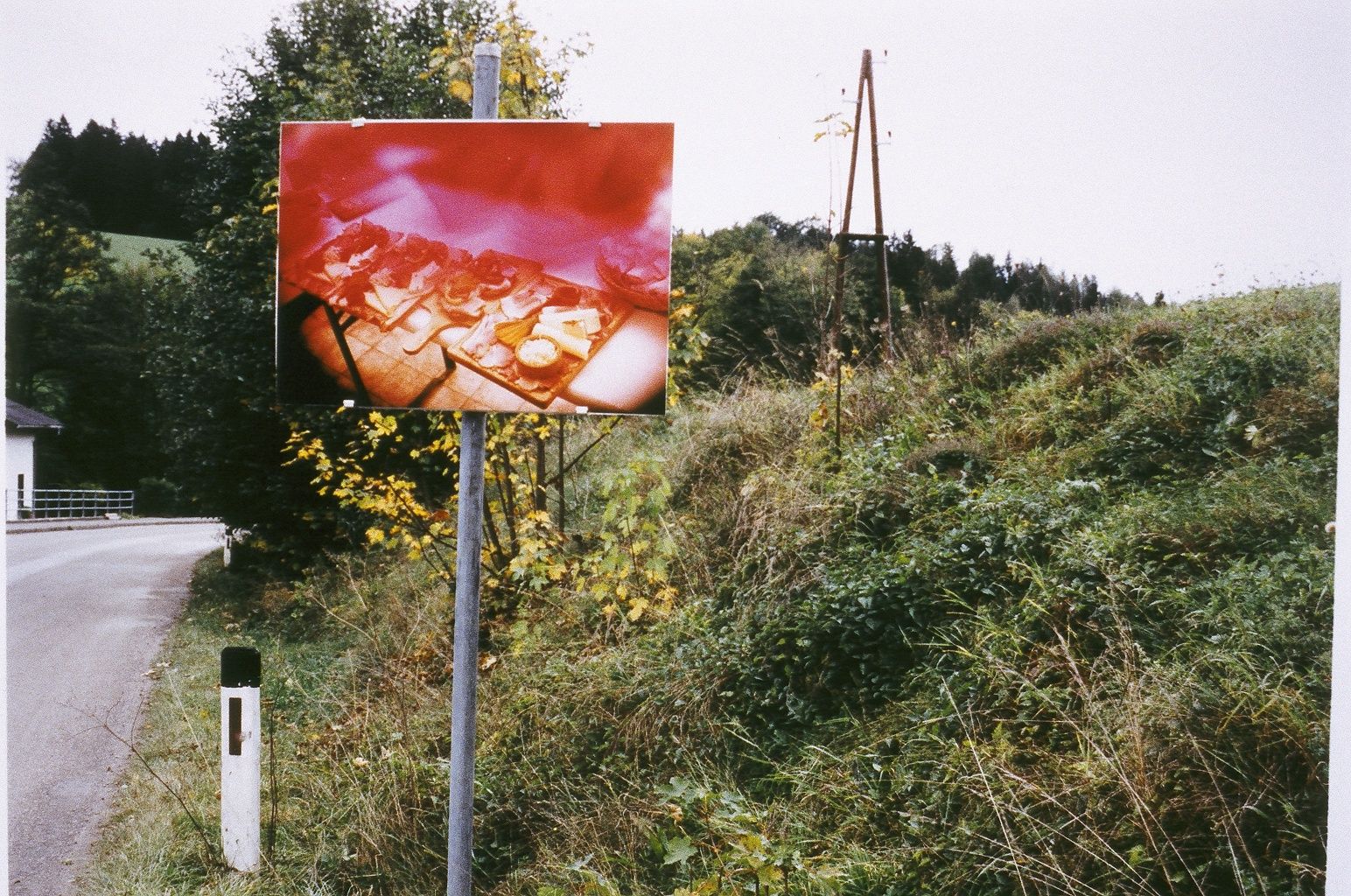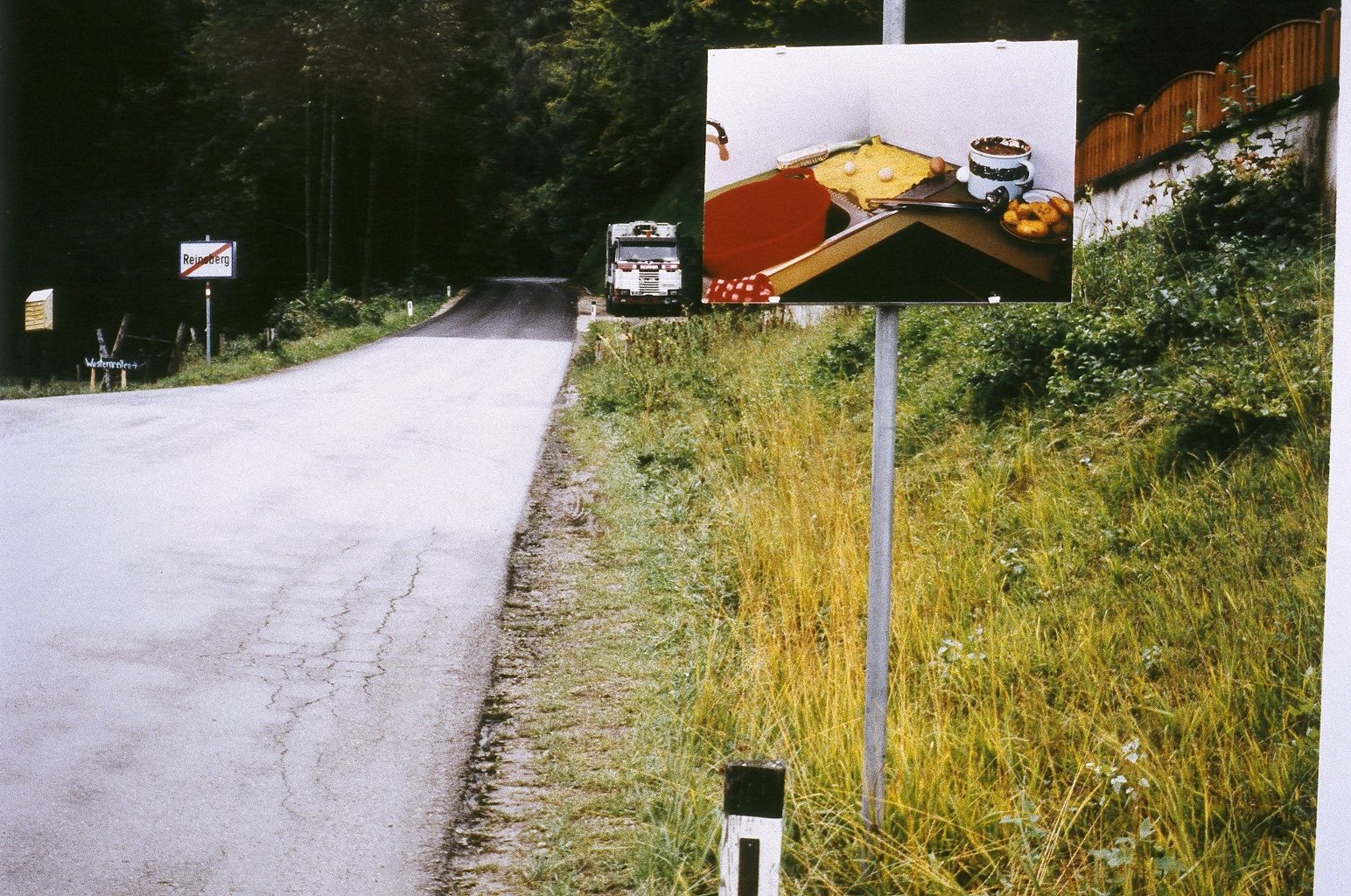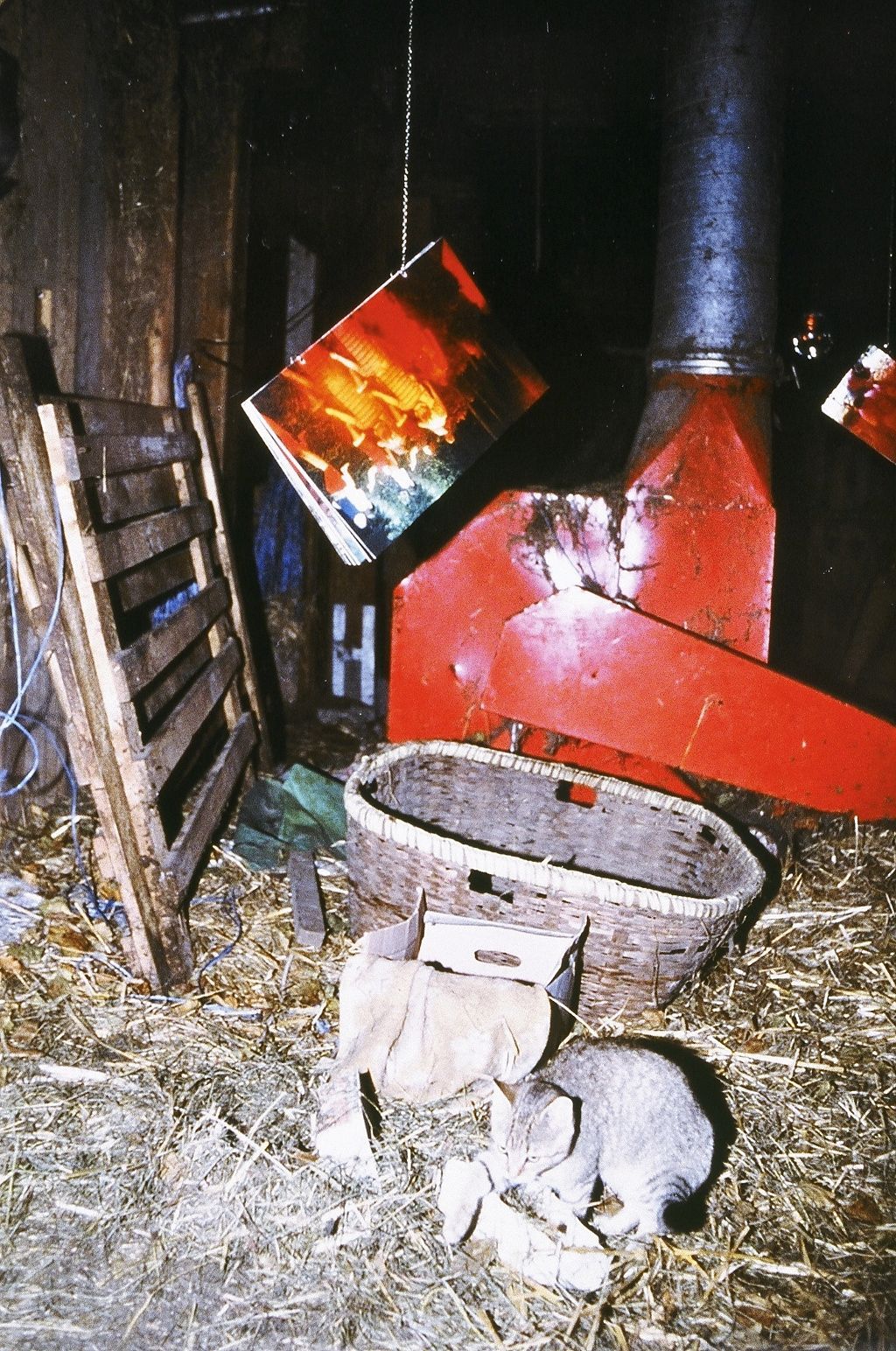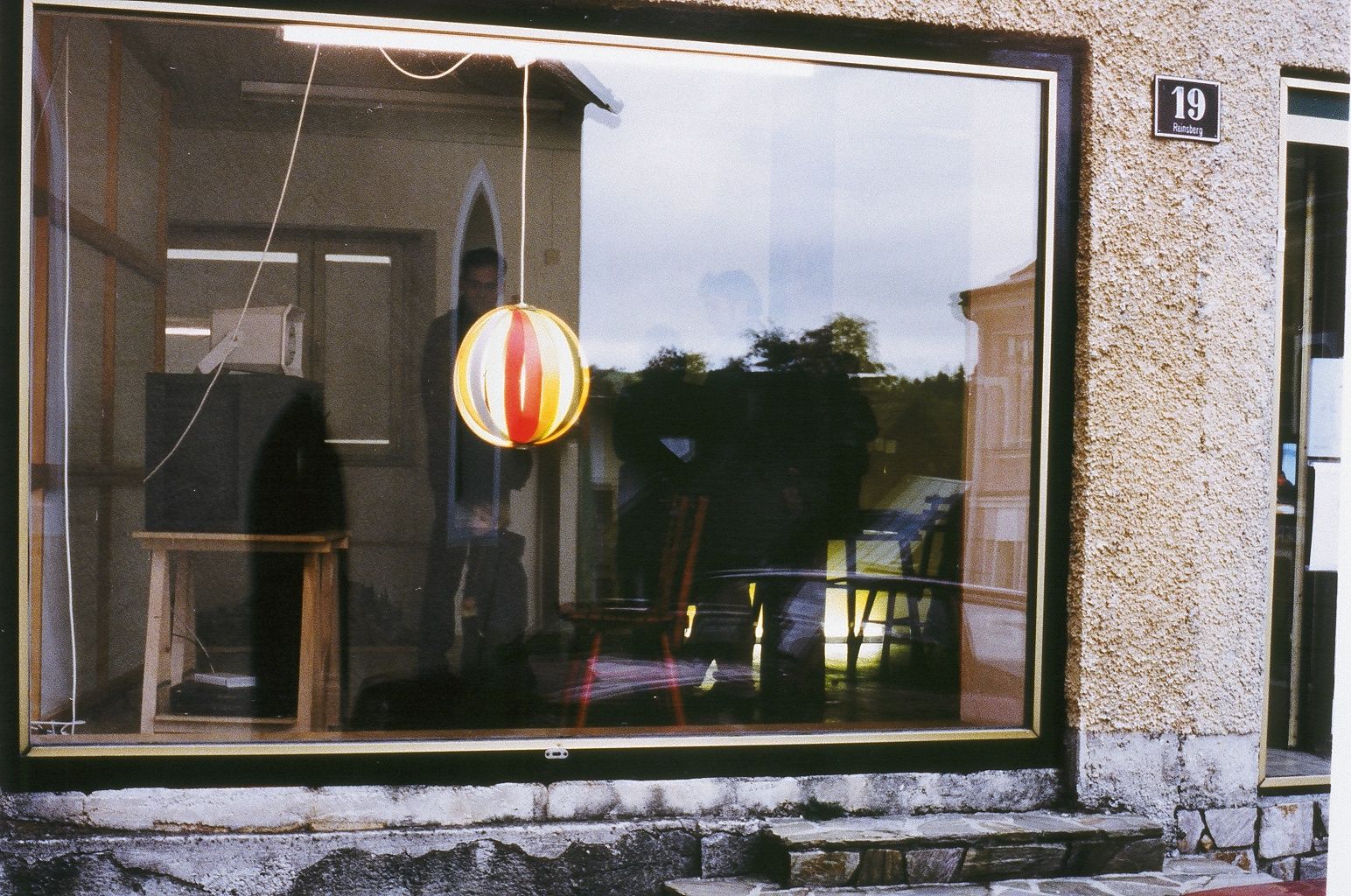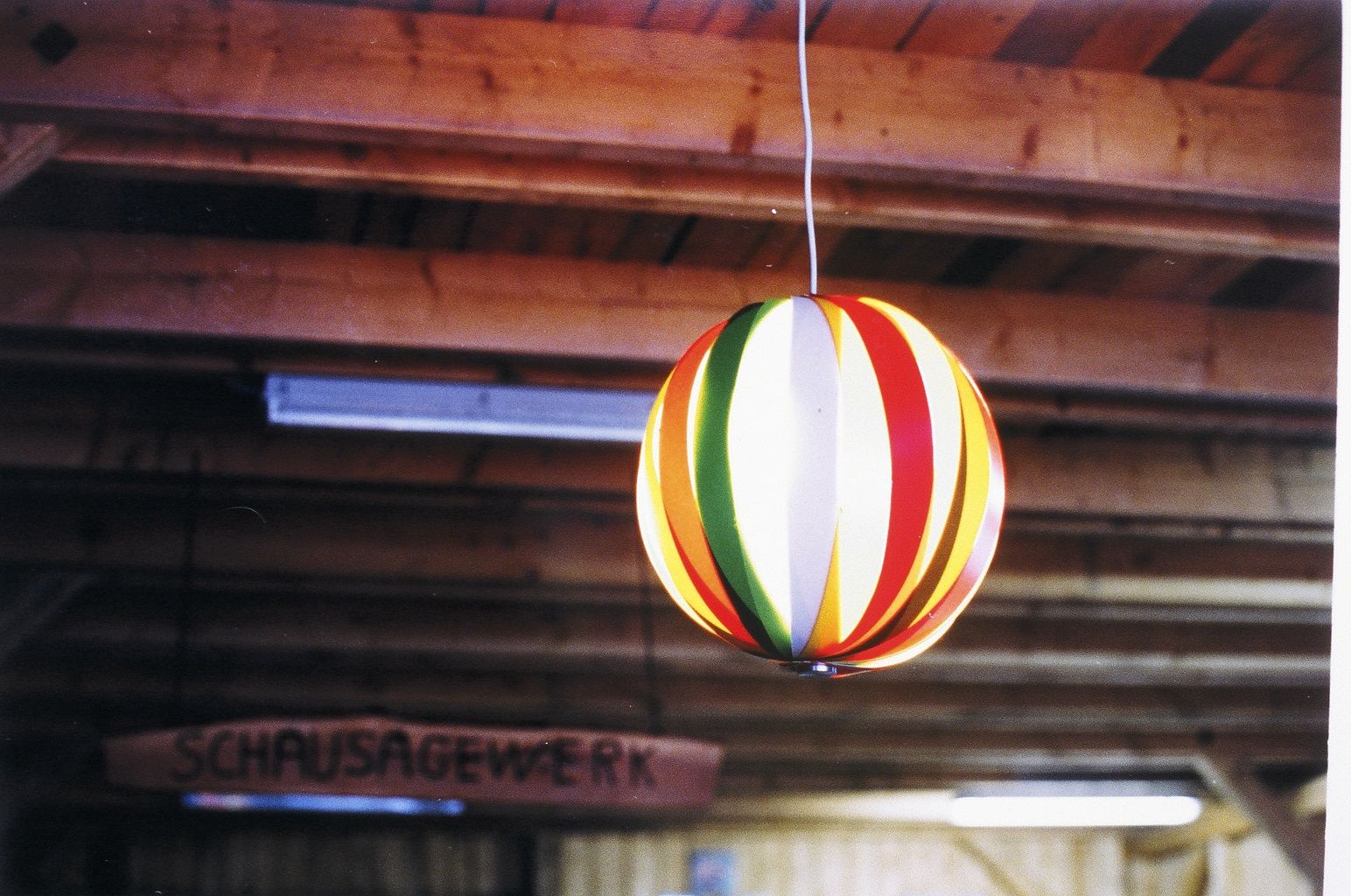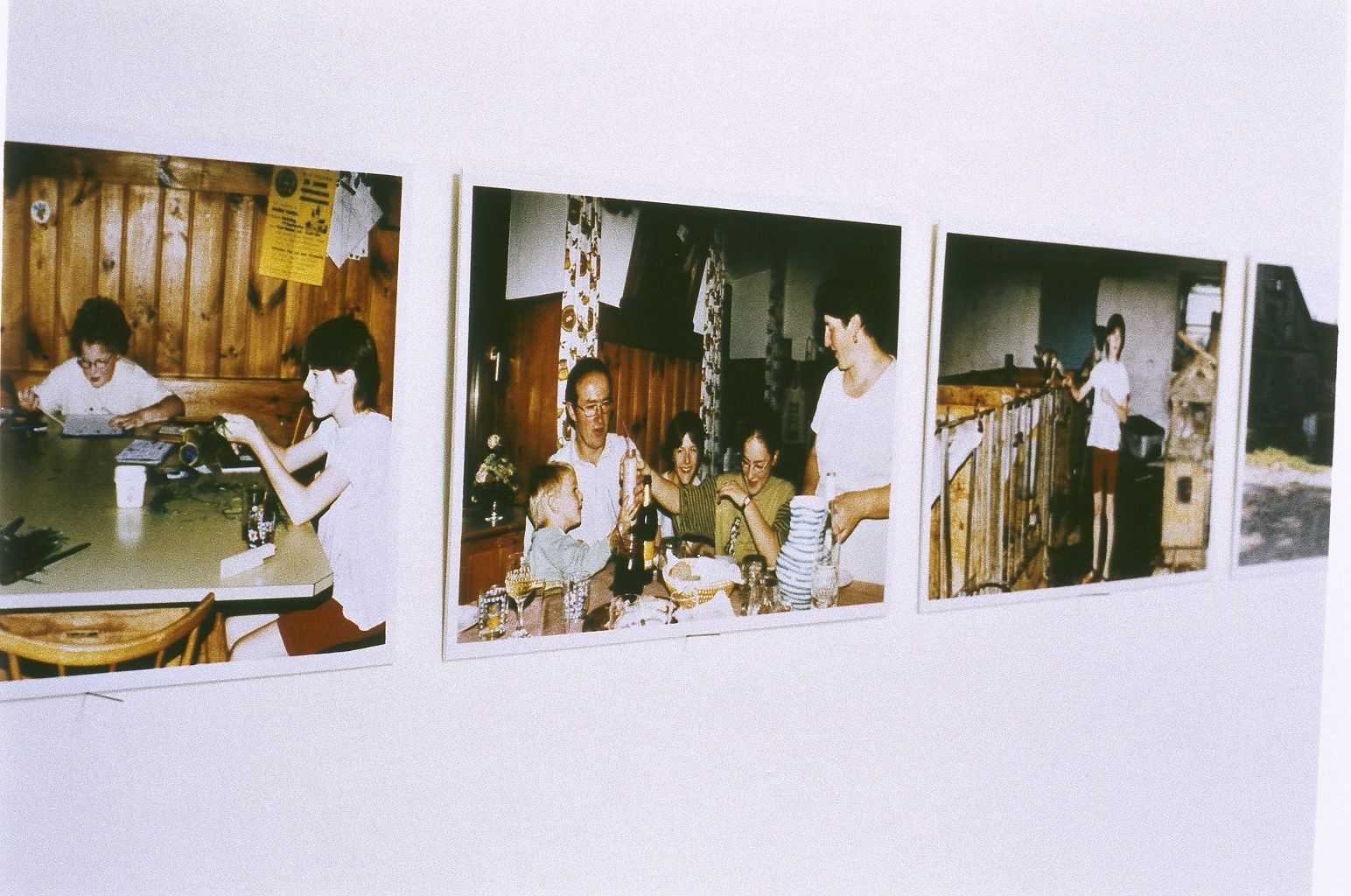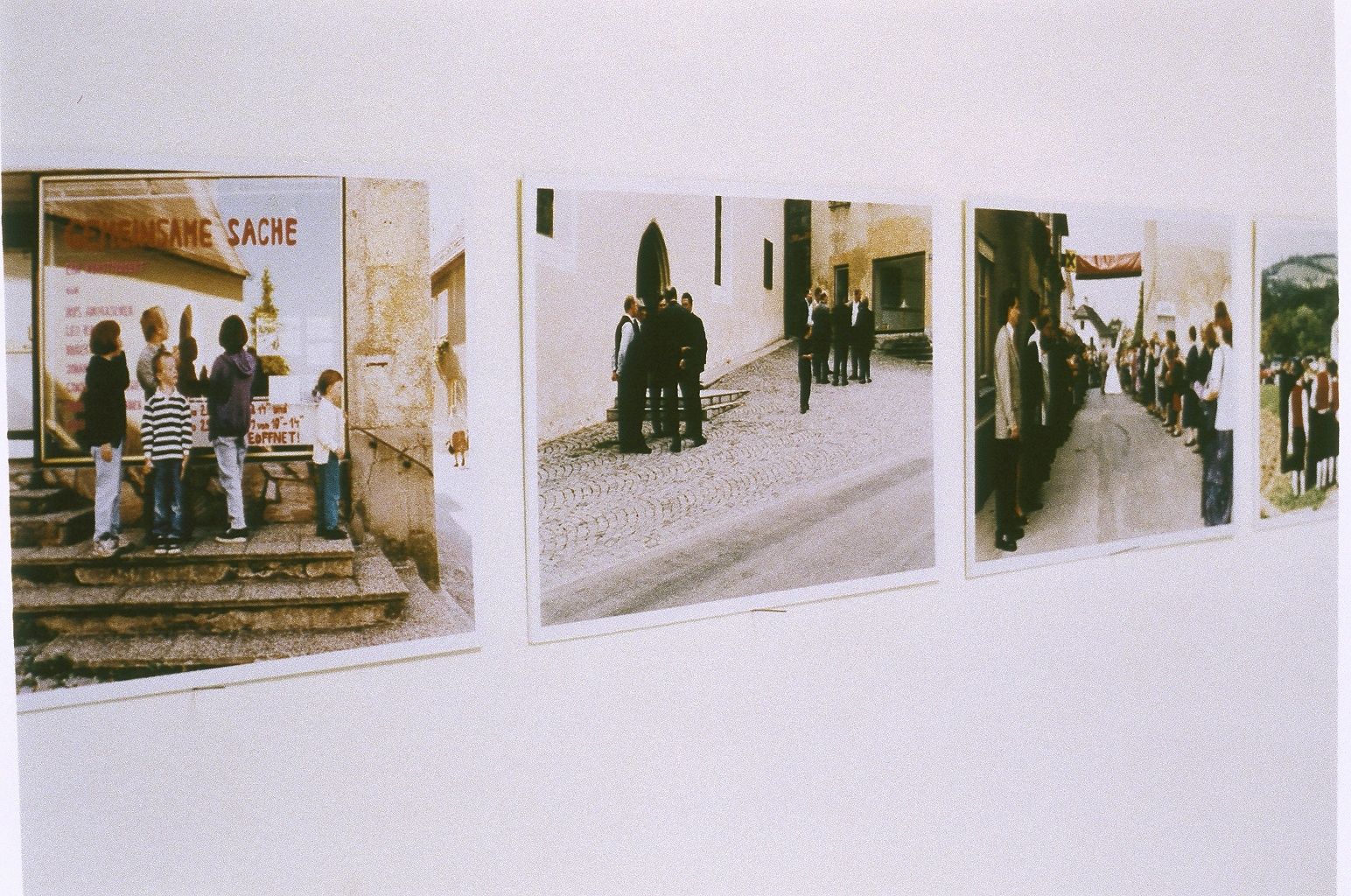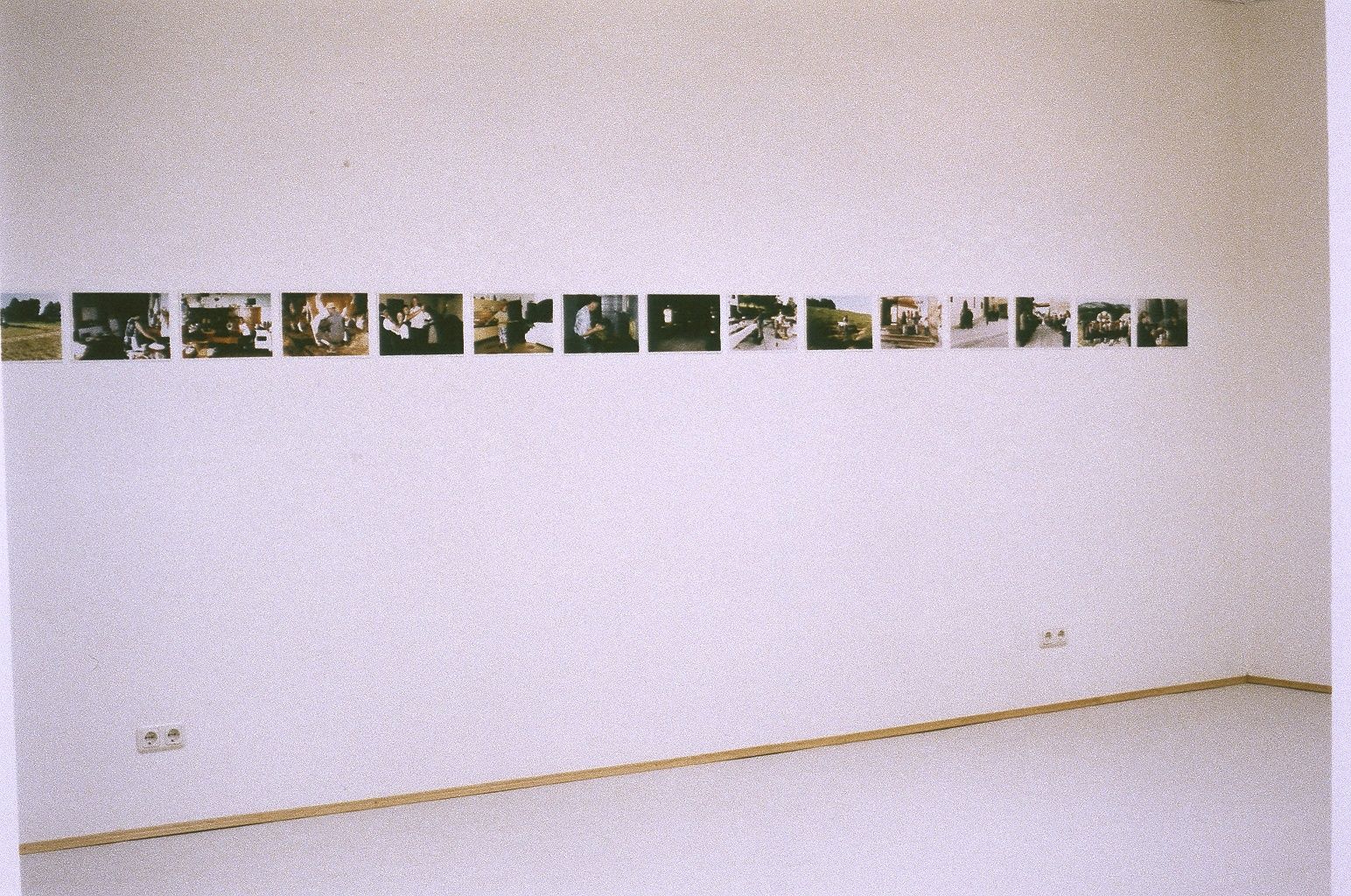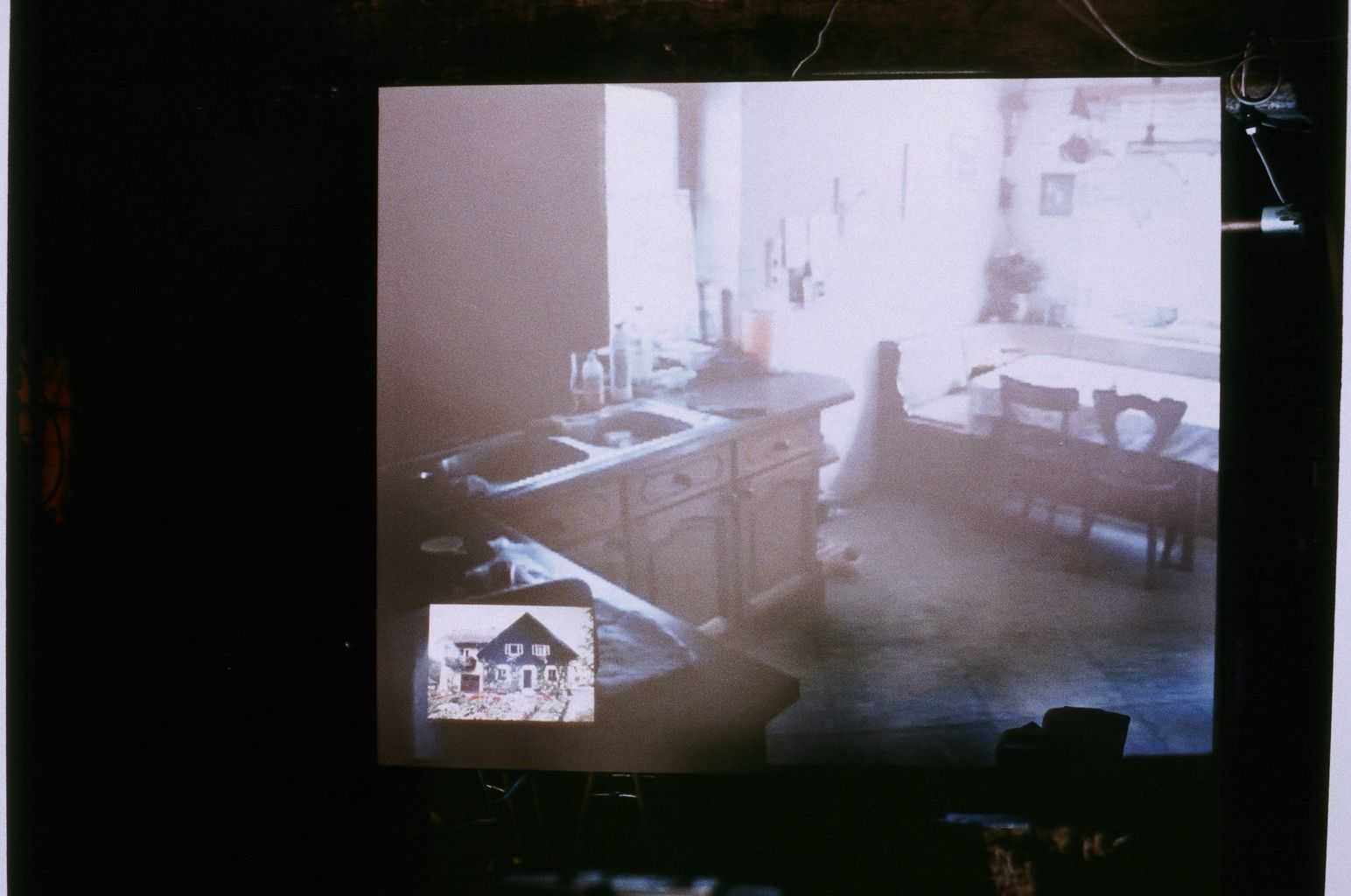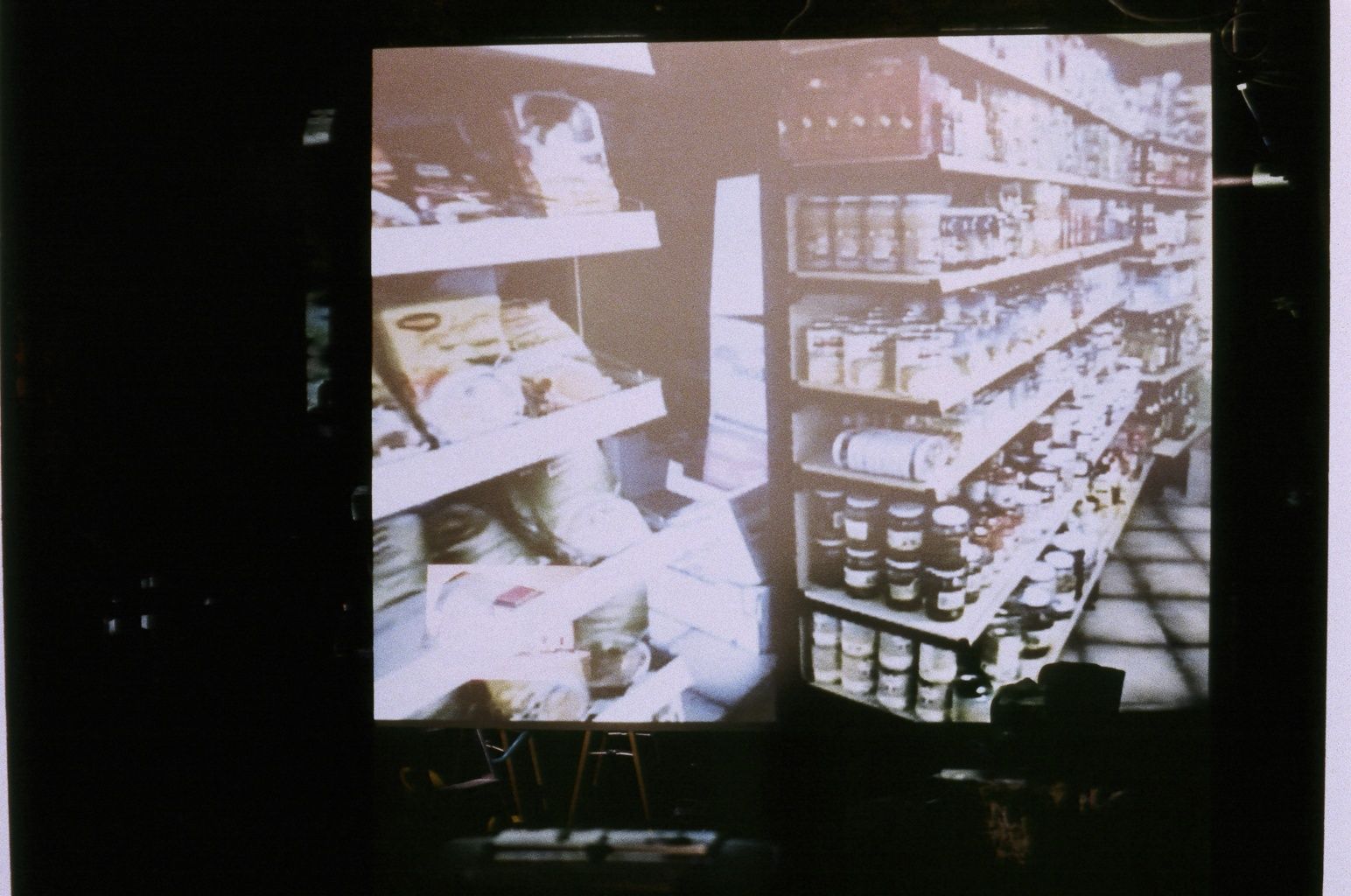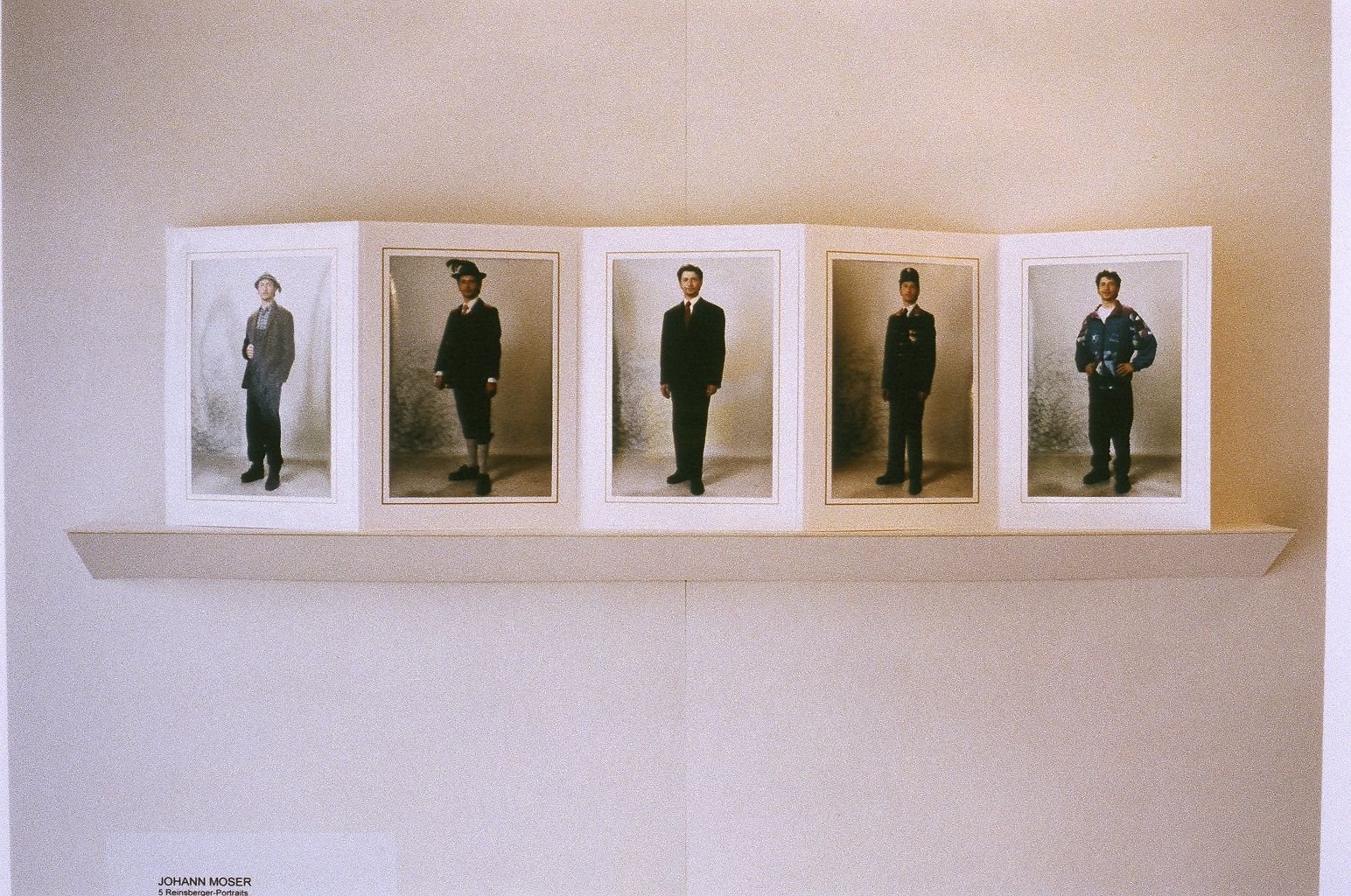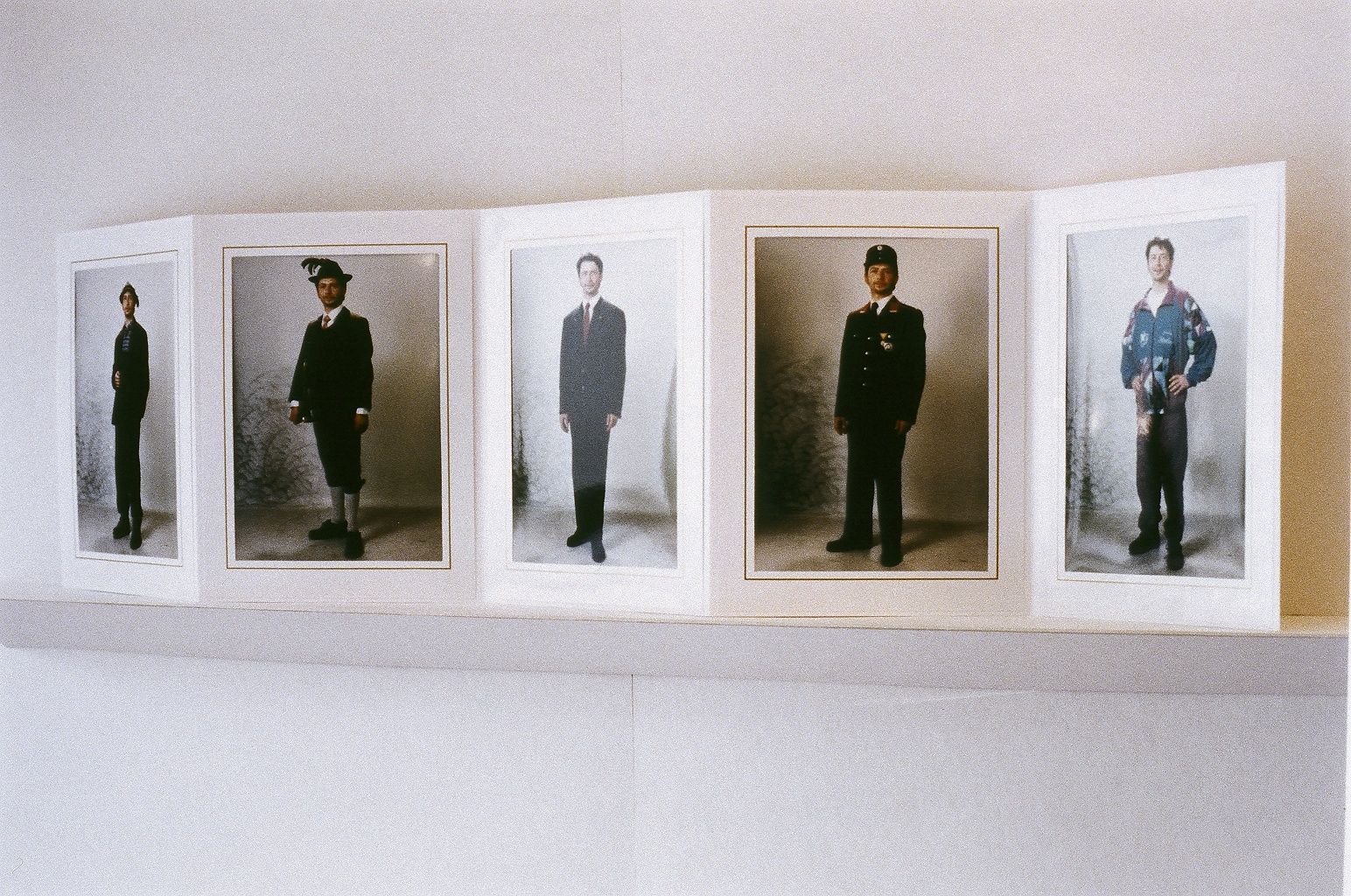Common Cause
BackArtists
- With
Information
Reinsberg is a community that operates at various speeds. On a quick drive through the town you feel the quaint atmosphere of a summer resort in the postwar period. It is idyllically embedded in a hilly landscape replete wuiuth many green meadows and mixes woods, sheep and cattle and indvidual farmhouses in sunny locations. Yet on a more extensive foray you experience a different Reinsberg, one that is trying to overcome ist isolation by carrying out intelligent village renovation projects, marketing ist own biological products and organizing unusual cultural projects. Almos every year there are artist’s symposia, sculpture installations, exhibitions and international music and literature festivals. Towering over all this ist he protective shield – the ruins of the medieval fortress which was has been renovated over the course of many years by the people of Reinsberg themselves and reactivated as a community cultural centre. As the final stage of this process the unconventional arena was opened. It floats over a circular tent of roof support by what used to be a car crane. Johannes zieser’s exrroverted architecture did not find understanding everywhere. Moreover, the active work of the organizers of the cultural initiatives also did not encounter the same enthusiasm with everyone. However, the supraregional attention did fill some skeptics with pride vis-à-vis the new landmark.
Hubert Lobnig und Iris Andraschek situated their project "Gemeinsam Sache" (Common Cause) between economic and cultural offensives and traditional placidity. Together with the artists they spent several weekends in the village to observe the people, the public life and the local institutions. They researched the everyday social interaction as well as the topography of the self-presentation in tourism: Reinsberg on the Eisenstraße, Reinsberg in the Mostviertel region, Reinsberg of the biofarmers, Reinsberg as a cultural village.
Contributors
- Kuration
Contributions
Iris Andraschek
"Storyboards"
Iris Andraschek's work "Storyboards" extends farthest into the environs of the town. A series of photographic pieces was to be seen on walls of houses, on specially made boards on street curbs and in a stable building. The motives had been elaborated together with amateur actors from a local theater group and volunteers. These were images of people in everyday situations, in part reflected in a multiple sense, alienated. In spite of their innocuous nature the onlooker was prompted to seek clues and connections.
Leo Kandl
"Reinsberg im September"
In the auditorium of the communal administrative office building, Leo Kandl had exhibited his work. He placed an ad in which he asked the people of Reinsberg to contact him to arrrange to have their portraits made on a specific day at the place of their choice. The product was a series of photographs in which the desired self-presentation of the persons photographed first had to be reconciled with the photographer's artistic approach. Thus, "Reinsberg im September" is not, as the title innocently suggests, the actual motif of the photographs but rather the exchanges between the actors, the interplay between gestures of self-representation and the interpretation made by others. Moreover, Kandl's work showed what often unusual social apparatures can be detected when one examines an unknown socio-tope with artistic strategies and deals with the village as a mataphor. For the very reason the seemingly isolated village is affected by the same technologies, by the same economic and social mega-trends, shifts in the social and cultural structure become more visible. Changed social practices are also experienced more incisively than in the comfortable chaos of the metropolis.
Hubert Lobnig
"interiors"
Hubert Lobnig penetrated into private and working spaces, into the "interiors" of the people of Reinsberg with his video piece which showed a village blacksmith's shop. A considerable amount of material on building and living culture in rural areas was collected on numerous visits and tours. Lobnig mounted these images of granaries, living rooms and workshops as well as outdoor shots of numerous houses in an endless strip in which the spatial boundaries and functions became blurred once again. The camera did not represent the voyeur, as one might assume, but rather the stroller who moved through spaces, letting himself be guided and distracted by contingencies and an occasional gaze. Lobnig's video journey is sort of prototypical for "Common Cause". The artist used the penetrating and illuminating light for shooting and exposing something to develop an exceptional geography of social space. It was as informative as it was because it was not from the outset geared to a certain result and always allowed notes and sketches to be incorporated in the work as a form of artistic practice. A number of them pursued a sort of experimental ethnology in Reinsberg before they opted for an artistic realization.
Johann Moser
without title
Johann Moser himself was photographed by a local photographer specializing in portraits and weddings. Here he would wear borrowed clothes and uniforms. He exhibited the series of photographes in the showcase at the communal administrative office: Johann Moser as fireman, as musician of the village band, as a churchgoer in a Sunday dress, and as a member of the Eisschützen club in a jogging outfit. On the one hand, Moser addressed the historic practice of rural photographers: either portraying people in front of stage sets or wearing clothes from a theatre's costume stock. At the same time, he alluded to the still rampant neurosis of masking when visitors from the city try to ingratiate their hosts by assimilating their emblems. The fact that the artist knows the settings from which he took the costumes from his own childhood, staging himself both as an outsider and as a local, and that he placed travesty as a spot where you would expect advertisment brochures and tourist information showed how quickly identities and cultural affiliations can become confused when a certain representation is imposed from above.
Constanze Schweiger
"Common Cause"
Constanze Schweiger sought to prolong the encounter initiated in "Common Cause" between the artists and locals. She created five coloured hanging lamps and gave them to the people of Reinsberg for common use at public sites. Thus the idea of a present for the host merges with that of social space which is still a matter of agreements in the country. The public space was often constituted only temporarily, in an inn, at church, at the bowling alley, without a specifically defined place, but at least around warming, light-giving sources.
Rudolf Weidenauer
"Ein Gastspiel"
Rudolf Weidenauer's performance can be described against the backdrop of the cultural imports that had become standard independent of the local expectations and needs. For one evening he arranged an evening for the local village theater, engaging an outside magician. On a garishly lit stage which hardly hid the tricks and optical illusions for even the non-initiated, the semi-professional magician mechanically completed his program without, again and again including the public. The motive of the encounter between locals and outsiders recursed here again as theatric act or even as polemic response to the status of the artist. He was often expected to do what Weidenauer has delegated to a collegue from a different field: to irritate, to entertain and amuse the audience. In any case Weidenauer brought together the idea of a touring theater, which was precisely what the project also was notwithstanding all the intended cooperation, as the title suggests: a guest performance.
Moira Zoitl
"Das optimale Gewinnminimum"
The two-part video piece produced by Moira Zoitl on-site was a work based on two important coordinates of rural assilmilation. The film, titled "Das optimale Gewinnminimum" (The Optimum Minimum Profits), traced the visible and hidden ramifications of power at the Raiffeisen cooperative. Interviews, inserts and personal statements revolved almost spirally around the practices of power and even the Reinsberg branch. The latter was both an ideal point of departure and of closure, once again embodying its ambivalent ideology on smallest quarters. Even though the film seemed to be moving in the genre of a TV report and made used of familiar dramaturgical elements, it was the alientations that revealed the subjective digressions, the rules that had been broken, the gestures and insignia of power but also of powerlessness. In a second video the artist stages herself as am athletic tourist, cycling over the mountains. She added footage of a professional racing event in these shots. Zoitl thus drew a longe curve from images of economic overspending, from the dogma of productivity to that experience, while als addressing those alliances that coopt rural space so subtly. Both dogmas were able to proloferate so undisturbed since they disguised themselves as rustic and close to nature. Yet in actual fact they had completely detached themselves from the landscape that they accupied.
Images (13)
